Leveraging Independent Radio To Tell South Asian Stories: A Guide To The Region's Frequencies
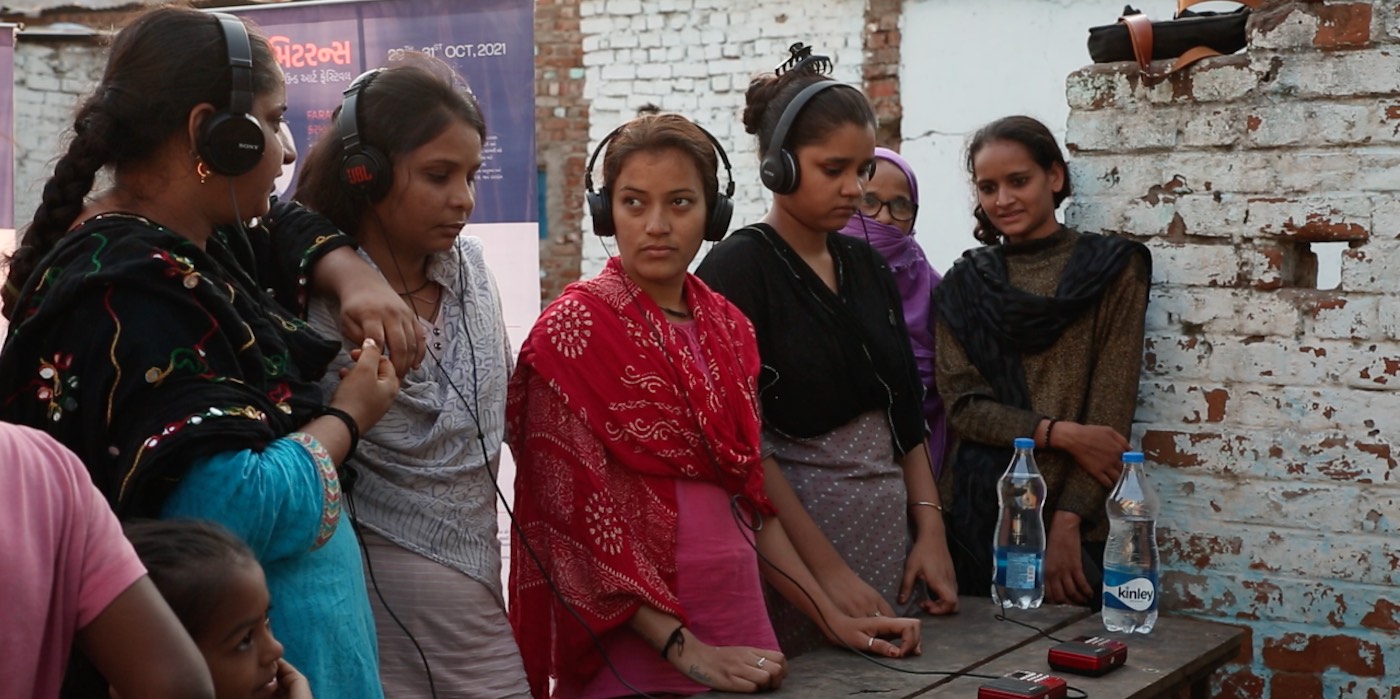
25 March 2022
Growing up in the 80s, Mae Mariyam Thomas would record radio shows on blank cassettes. Back then, radio was a space for discovering new or forthcoming music, staying informed, but the reality was far from it when Mae joined 94.3 Radio One, a commercial radio network in India, as a presenter. She quickly discovered that you had to “be popular or Bollywood” to get any airtime. Even the best independent acts of the day like Pentagram were a no-go on her afternoon requests show.
Today, as the founder and host of indie music podcast Maed in India, she helms one of the leading platforms showcasing independent musicians in the region, carrying the legacy of radio forward in her own way. Inspired by the format of BBC Radio 1’s Peel Sessions, Mae’s show embodies the seasoned integrity of live music production in the studio, in turn, acknowledging an oft-ignored reality for independent artists. “It’s not always easy for musicians to record, produce, mix, master and release their music regularly,” Mae tells Border Movement.
“Maed in India allows artists an avenue to be discovered by a music-loving audience. I take on the challenge of recording them live in a studio as stripped-down sessions. Plus they get to talk about their life and the origin story of their music,” she explains. With a dedicated team of producers, Mae has since invited artists from South Asia and the diaspora, adding to the show’s music archive and repository of weird band stories.
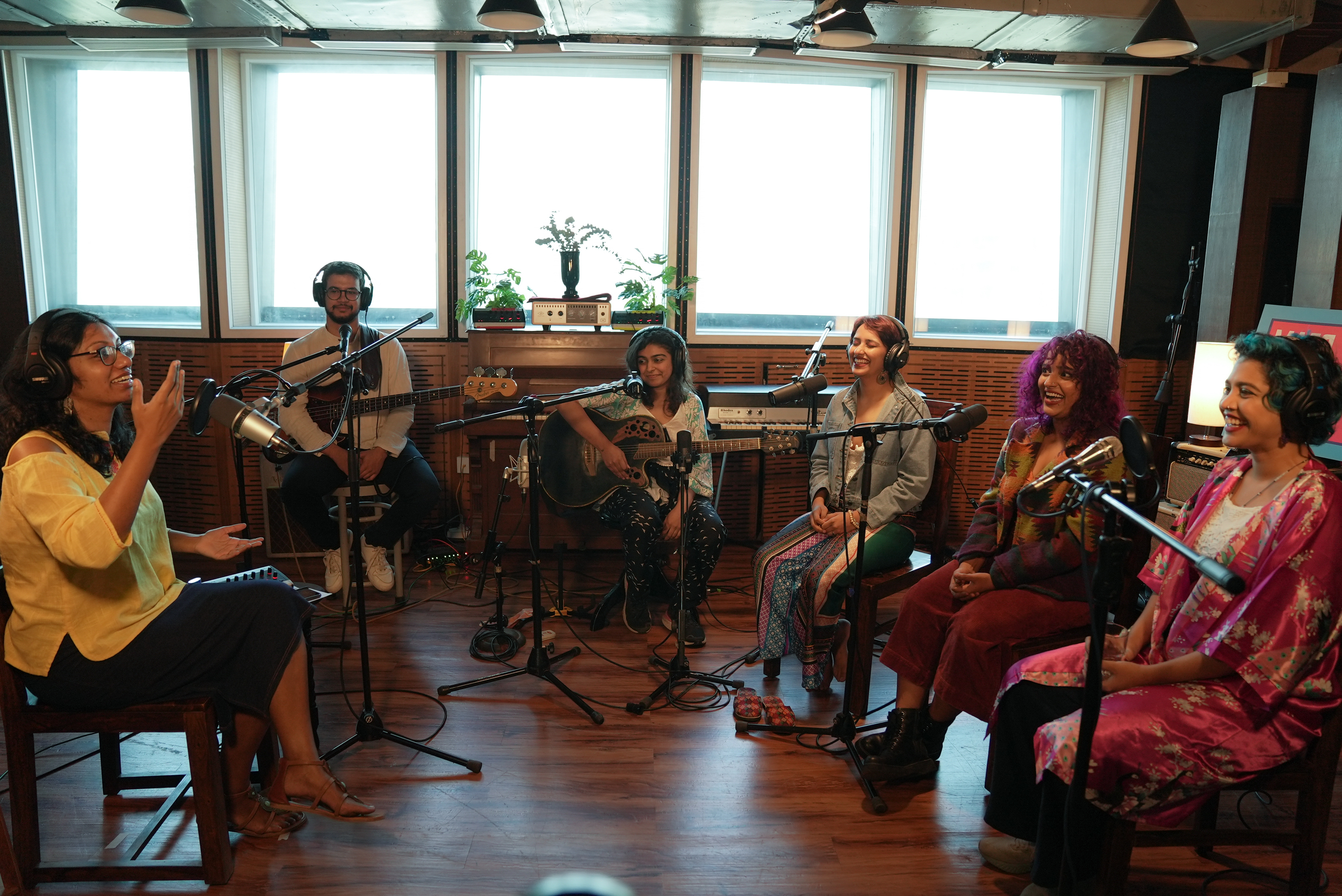
Image courtesy of Maed In India taken at their Ladies Special in 2021, with host Mae Mariyam Thomas
A homegrown sonic movement
The advent of independent radio and podcast-format transmissions in South Asia can be traced back to audio interventions in the colonial and post-colonial periods. Before Indian independence, for instance, ham radios in India were broadcasting messages to freedom fighters, firmly rooting the emergence of online broadcasting and community radio in the region’s sociopolitical and cultural matrix, in the same way UK’s independent stations rose out of the rich legacy of pirate radio.
It was only in 1997 that Nepal’s Radio Sagarmatha became South Asia’s first official community radio, responding to the often-intersecting needs of the region’s culture and development sectors by streaming long forgotten Nepali folk music mixed with ‘development messages’.
In the years that followed, cultural consumption underwent a paradigm shift across the global south, with the arrival of broadband internet and cheap data. Means of production and dissemination became more accessible, leading to an irruption of dance music communities and local hip-hop collectives. DJs, promoters, presenters, and selectors who were returning from western cities with a vibrant nightlife saw in internet radio the opportunity to give voice to these subcultures and respond to this exciting new interest in alternative music.
In 2016, after brushing shoulders with leading promoters across the world, Mohammed Abood aka DJ MoCity moved back to India and co-founded Boxout.fm with Sahej Bakshi (Dualist Inquiry) a year later. Like many others, he found himself in an incredibly productive independent scene, but it lacked the energy of an ecosystem that consolidates all of it.
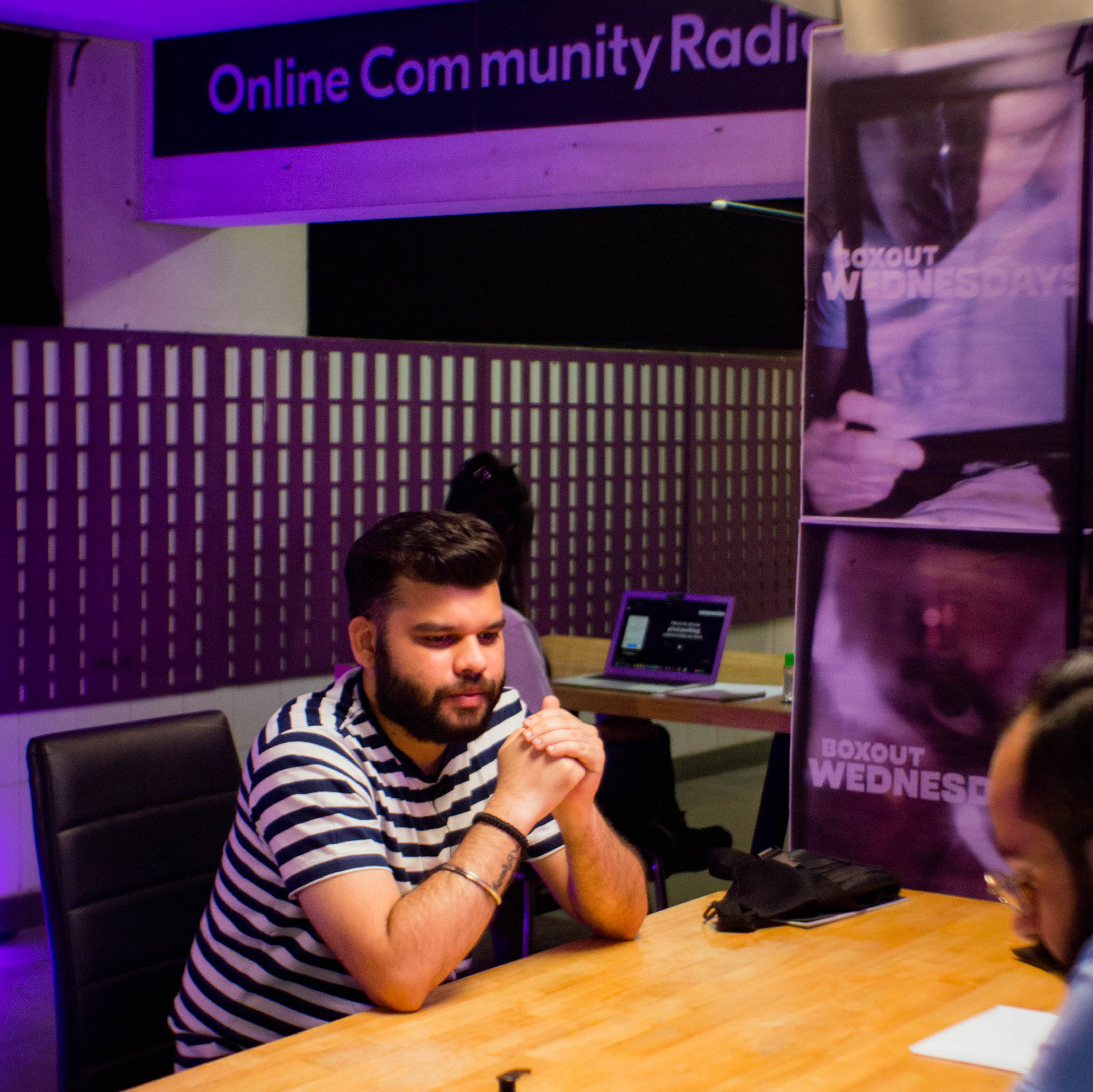
Image courtesy of boxout.fm
At Boxout.fm, they set about creating a culture that seeks to democratise access to regional independent music, and present an archive of Indian independent cuts to the world. Today, the station is arguably at the centre of South Asia’s fast-growing electronic music community, steadily recognised by online radio stalwarts like Seoul Community Radio. In just five years, Boxout.fm has added voluminously to its shows’ catalogue with over 70 unique properties developed with artists, labels and listeners across the world, where hosts get complete creative freedom to develop their own ecosystem – from setting up a label, to running a monthly club night and independent PR.
Not far from Boxout.fm’s Delhi HQ, Pakistan is serving up online platforms to foster deeper connections, awareness and collaboration between the underground and alternative music and arts scene in Asia. Soundistan, launched by Hong Kong-born Sameer Arshad, puts out fresh mixes on SoundCloud that are often recorded as part of More Rice Radio (an outworking of a Bangkok-based record label) or featuring notable selections from the homegrown Jugaar Records. Another popular project staging creative audio interventions under the aegis of creative technologist Jahanzeb Safder is Karachi Community Radio.
With a dedicated team of two, KCR aims to promote music and culture in the state, conceptualising music shows, collaborating with independent musicians, and live-streaming them for free, a testament to KCR’s role in promoting local artists, not only on air but by taking an active stake in creating the ecosystem where art can flourish. “Today, I have a startup in the live-broadcasting space and my work is being recognised,” Safder beams, recounting getting shortlisted for UNESCO’s training-in-residence programme a couple of years back.
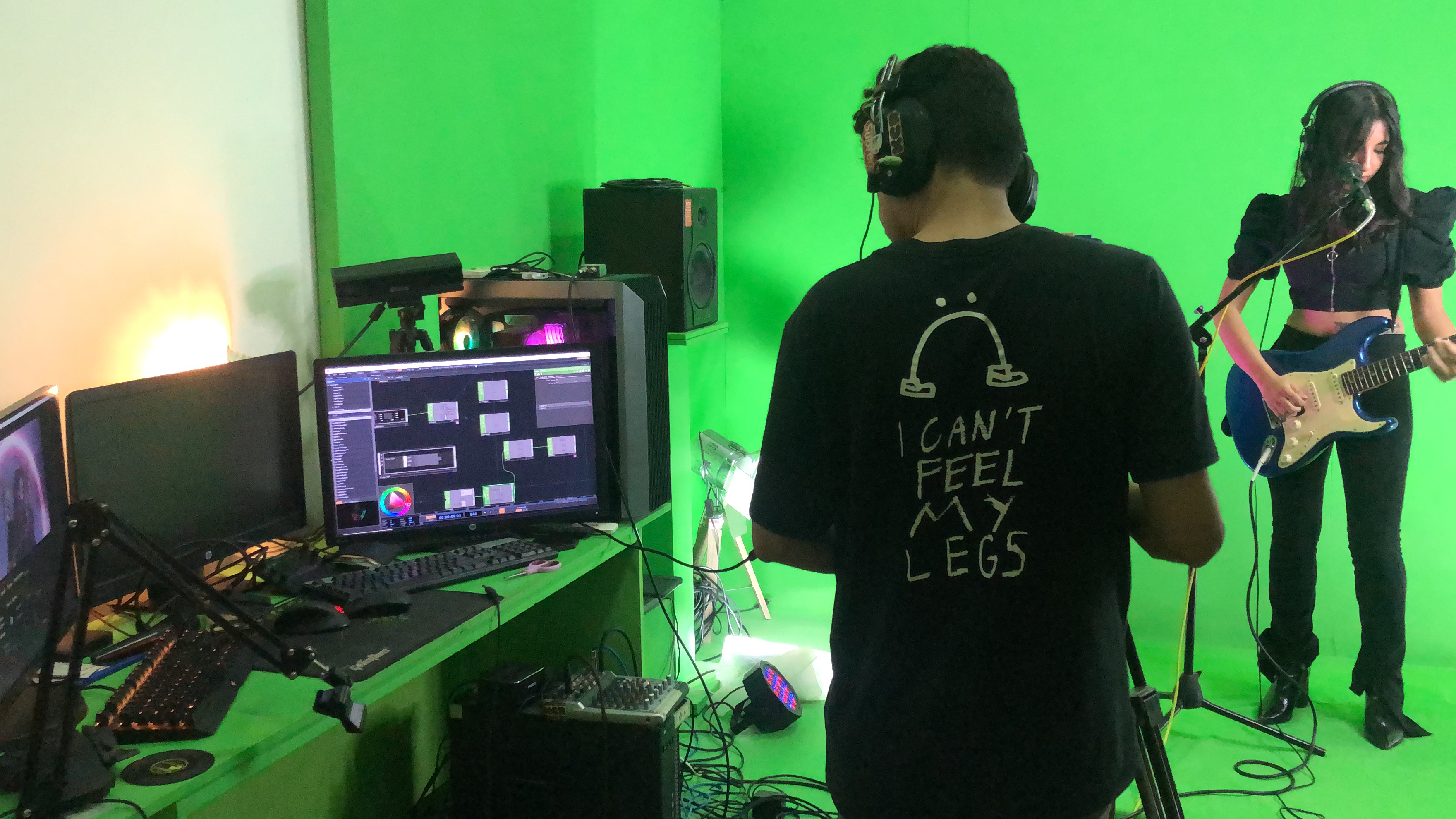
Image courtesy of KCR, image credit: Sharmeen Inaam
“[It is] only when people come together, ideate and consistently execute [their creative vision] that a scene starts to develop,” he tells Border Movement. “Just like the Urdu phrase, “حرکت میں برکت ہے“ (Harkat mein barkat hai), there is blessing in movement/striving.” The sentiment resonates strongly with veteran DJ and UK-based radio host Raji Rags’ commentary on the best radio stations being “like you’re part of a community, of those who have passed before you, and those who will come after you.”
The finest hour: What makes great radio
Despite Boxout.fm’s no-Bollywood, no-EDM policy, the acceptance of internet radio is on the gradual rise, notes Abood, ascribing it to the rising popularity of London-based global radio platform NTS and other online stations across the world. Exposure to similar formats on Mixcloud seems to be sensitising listeners to the ideas that radio can cater predominantly to independent music, and that digital storytelling may involve diverse approaches.
“Initially,” Abood tells Border Movement, “we had a moodboard of sounds and the kind of radio shows and podcasts we wanted to host. The biggest challenge was to get the new radio hosts to present their show radio style and not as a DJ mix. This is crucial to keep the listeners engaged and also to educate people and build a personal connection with them.”
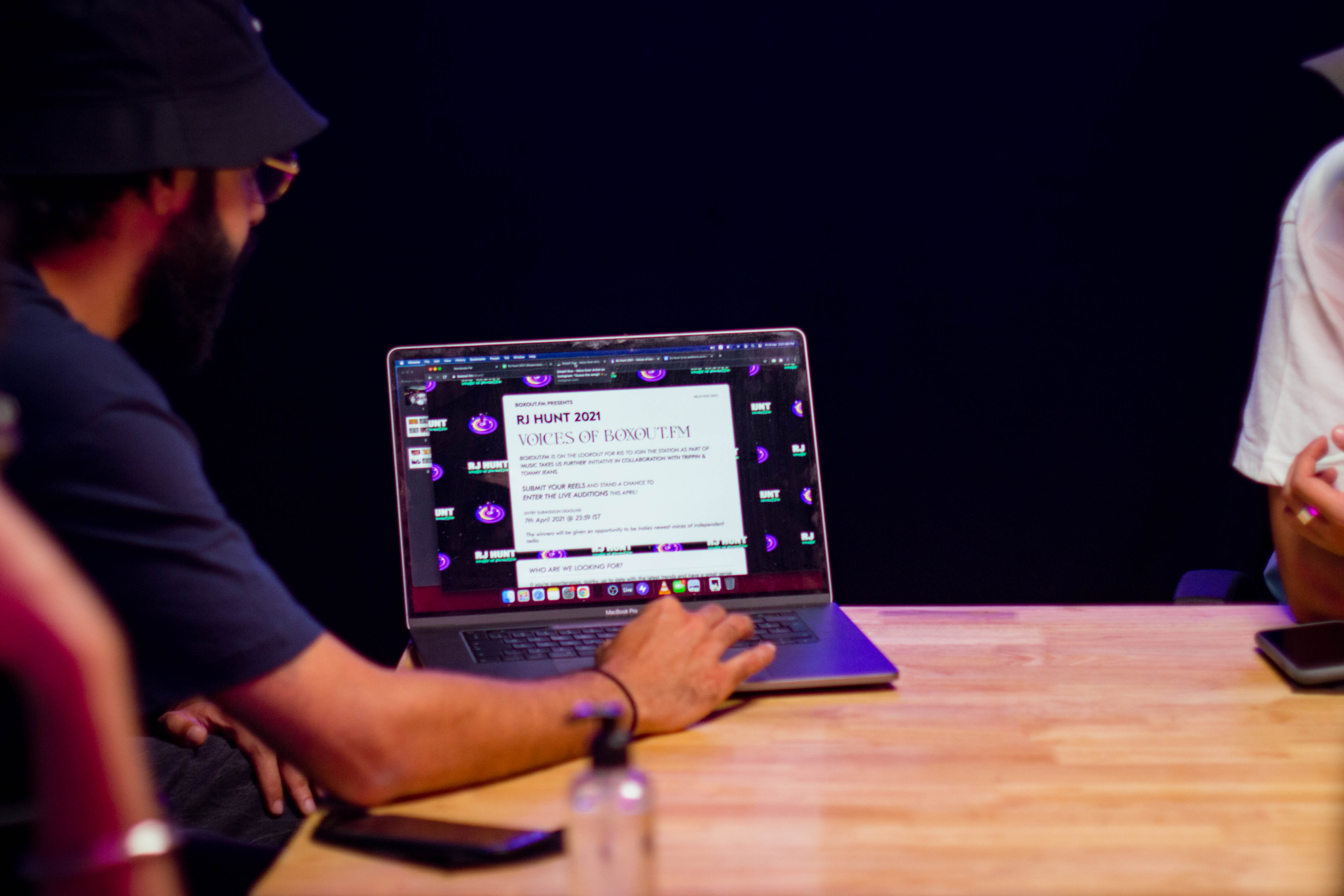
Image courtesy of boxout.fm
BBC Radio 4’s 2-part series “Indian Rave” demonstrates one way of doing that, weaving oral stories into a profile of Nucleya. Contextualising deep explorations of the sounds that frames his music in his mass appeal, radio producer Steven Rajam takes us along on his journey documenting the artist’s predominantly working-class fanbase at an open-air event in Mumbai.
In Nepal, collectives like Fuzzscape are documenting local culture, languages and sounds through episodic archival storytelling. Founded by filmmaker Prasiit Sthapit and producers Rajan Shrestha and Rohit Shakya, the project travels to far-flung corners of the Himalayan state, covering sound-based practices that inform local tattoo ceremonies, horse-riding festivals, funeral rites, in collaboration with artists from these communities in the spirit of participatory cultural research.
Mae also speaks to the importance of “great research” for doing a good interview on air. Illustrating the fascinating stories that enrich Maed in India, she recollects an episode featuring British-Indian artist Steven Kapur pka. Apache Indian from the past year. “Steven was surprised when I brought up his relationship with reggae music” Mae tells me, which, as it turns out, had a lot to do with being raised by a Jamaican nanny – a fact Mae had discovered in an obscure corner of the internet. “And after that, he become even more forthcoming. Knowing that little bit more about him, made him realise how invested I was in getting to know him better. Anyone you interview will respect you more when you’ve made the effort to research them thoroughly,” she adds.
Introducing a measure of criticality and awareness around regional protest music, Goethe-Institut launched a series of podcast and pirate radio featurettes as part of their continuing multidisciplinary M.A.P. // A.M.P. programme this year. Hosted by former HIT95 FM host RJ Sarthak, the first chapter documented various forms of artivism with guests Shubha Mudgal, Delhi Sultanate, Loknaad and Ahmer, while the podcast ‘Anatomy of a Protest Song’, facilitated by journalist Bhanuj Kappal and featuring acts like the Casteless Collective and Imphal Talkies, dissected protest songs from far-flung regions, in an attempt to dissect their endurance and relevance today.
Radio residencies: Pushing the vanguard
Even with the right research, working with online radio is not without its technical and physical challenges, as battered turntables, missing needles, badly wired microphones double down on the stress of having to fix these issues live on air. But with the mushrooming of radio residencies, access to resources and learning has become more democratic, with opportunities to learn from radio experts at reputed stations across the world. This has also resulted in an uptick in Asian artists showcasing regional subcultures and stories across airwaves, helping usher in a new era of cultural exchange across borders.
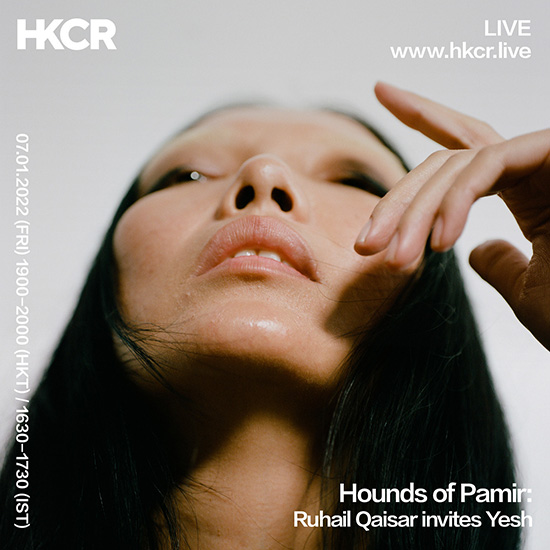
Image courtesy of Ruhail Qaiser
Presently curating “The Hounds of Pamir” series, Ladakh-based sound artist Ruhail Qaisar began his residency at Hong Kong Community Radio (HKCR) with monthly hour-long solo sets about his experiences back home during the pandemic, which now sees frequent global guests like YESH, and Enclave. The autonomy and creative space has emboldened him to explore difficult themes deeply rooted in his personal and local histories with rural Ladakh, leading to a fellowship for Musicmakers’ Hacklab (a part of Berlin’s CTM Festival) earlier this year, also making his NTS debut on Meuko Meuko!’s monthly show with original compositions and radio pictures from Ladakh, soundtracks from Indian parallel cinema, and heavier emissions from the South East Asian underground.
NTS enjoys the reputation of showcasing South Asian selectors and spinners regularly on their platform – many of whom outgrew their illustrious nightclub careers and moved to radio, like Raji Rags. DEBONAIR (Debi Ghose) and Nabihah Iqbal are among other notable fixtures at their Hackney studio, rustling up shows around themes of cultural identity, intersections and music history. Exceedingly popular also are their Discostan sets, curating journeys through the BPMs from South Asian and MENA regions and helping bring a much-needed radical embodiment of marginalised people to the dance floor.
An unforgettable, crucial dimension to broadcasting hyperlocal music on public radio is also that it forges a cultural bridge between diaspora populations and the distant histories coded into their South Asian heritage. Anu Ambasana, who wears many hats (illustrator, DJ), has been using her monthly hour-long slot at NTS to showcase Asian creators. Having grown up far away from her roots, amidst the melting pot of western and immigrant influences in London’s Hounslow, Anu’s Diwali set from last year was a charming tribute to the culture she’s never directly interacted with. The show garnered a lot of attention, resonating deeply across the internet and with listeners from the Indian diaspora.
Besides her electronic shows at the female-run Foundation FM (also in London), Anu has constantly been using her chops as a radio host, to bring attention to COVID-19 relief efforts in India or Palestinian liberation, much like her peer Jyoty Singh (Rinse FM) who managed to direct a lot of attention to the farmers’ protests in India or the humanitarian crisis unfolding in Afghanistan, on her home-brewed hourly shows.
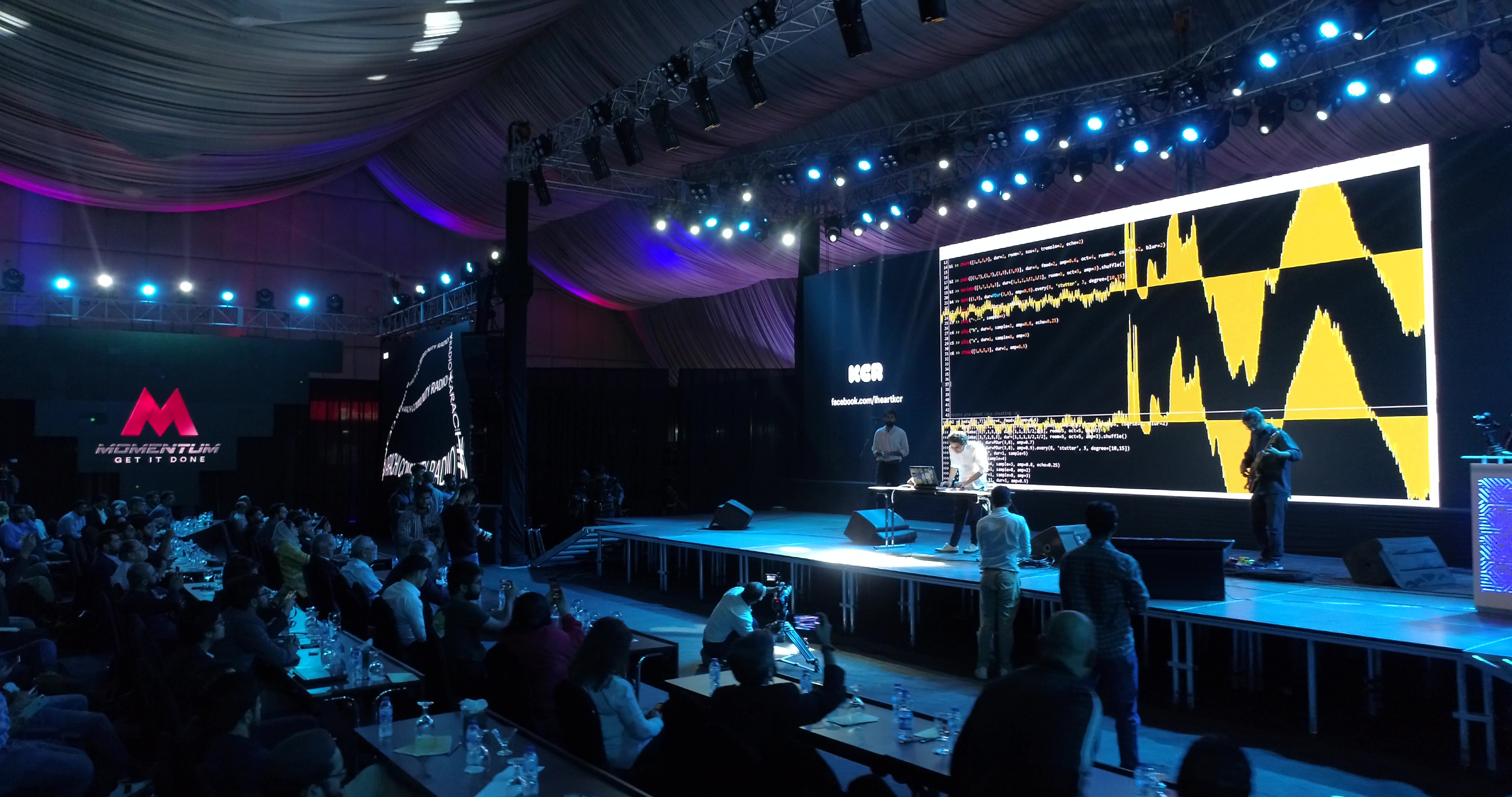
Image courtesy of KCR showcasing their pop-up at Momentum Tech Conference in Karch, 2019.
At the BBC Asian Network, four selectors take rotational slots every Sunday, including Resident DJ Aneesha Kotwani. One of her shows last year featured a cut by Whale in the Pond, an up-and-coming folk-outfit from Kolkata that draws from frontman Sourjyo Sinha’s Sylheti roots and culture. It counts for something when a language, gaining revived interest from linguists and scholars across the world and belonging to a historically oppressed community, is heard on Britain’s airwaves that enjoy a sumptuous Sylheti listenership.
In response to the representation problem in the audio industry, Spotify India is supporting 10 women to develop immersive podcasts. With Mae and radio doyen Rhea Mukherjee helming the virtual mentorship, the Sound Up initiative is a move towards championing more female creators in the radio sector, which currently accounts for only about 20% women in an executive role, according to the USC Annenberg Inclusion Initiative.
Distant dialogues: An interlude
Beyond this cyberspace of podcasts and internet radio lies a stratosphere of people-powered transmissions in the rural South, where sparse internet coverage means your exposure to it is contingent on working in the social development space. In 2018, the women-run Sangham Radio, India’s first community radio had a fundraiser going to save the project from extinction. Operating since 2008 with support from a local NGO and transmitting two-hour Telugu broadcasts to rural Dalit communities in Telangana, Sangham had been struggling to sustain its operations.
“Villagers feel happy when they hear their voice on the radio in the form of songs or discussions. They will also share this joyfully with their neighbours,” local farmer and presenter Musigari Nagamani told a leading English daily to illustrate its value to the community. “The song the community radio plays depends on the season, whether it is time to plough, plant seeds, irrigate or harvest. The songs recall our tiring work at the field in the morning,”
Last year, Pinky Chandran of RadioActive, a community radio vocal about local civic issues and based formerly out of a Bengaluru university, also shared painful memories of her lone crusade to keep the station up and running during the second wave of the coronavirus pandemic.
“I felt helpless because we had built something so good, so useful, and the pandemic deleted our progress in one fell swoop,” she said. However, the team swiftly uploaded their shows to SoundCloud, re-amassing a considerable portion of their older listenership, while continuing to resume production of new episodes around topical themes.
Radio mutations: On air after the pandemic
With universities shifting online, many college community radios like Chandran’s are taking some time off-air, to digitise their shows and transition completely to streaming platforms or online radio formats, like the archival radio shows from US college stations WFMU and KEXP.
With the pandemic stifling independent operations, many stations have been reduced to bare bones while a few have experimented with different, unorthodox modes of operation. Emulating global peers comes in various forms – live streaming radio shows on Twitch and Discord, organising educative workshops, promoting new merchandise, as well as engaging in multi-disciplinary endeavours.
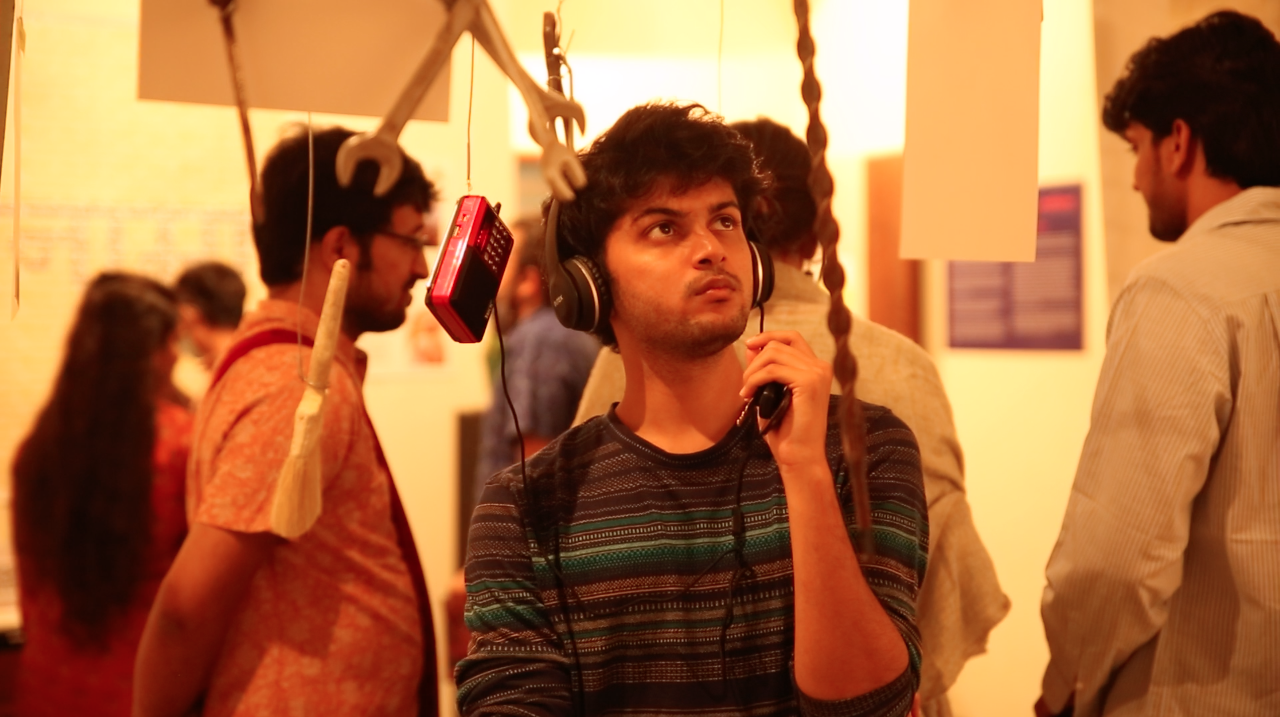
Image courtesy of Transmitterance Festival by community radio Radio Nazariya, an outworking of local arts organisation Drishti Media.
Ahmedabad-based community radio Radio Nazariya, an outworking of local arts organisation Drishti Media, recently incubated and showcased the works of four resident sound artists at the Transmitterance festival, that in turn, offered visibility to the radio’s arts-based outreach work engaging youth to create podcast-format and live shows about fringe cultures, gender stories, and health issues during COVID-19.
“The pandemic has been rough for so many of us and trying to keep myself and my production company afloat hasn’t been easy, especially since it’s a personal investment because I believe in what I’m doing and the vision I’m building. And I’m so thankful to sponsors and partners who believe in that too,” Mae also admits. “Luckily, so do my sponsors and partners,” she adds, shouting out audio tech company Shure that helped bring the Ladies Special show to life this year.
“With people stuck at home, we actually saw our podcast listenership grow during the lockdown,” Mae shares, offering a fresh insight into contemporary radio consumption habits across cities. “Usually, they would tune in on their commute to and from work, but now with work from home, people are listening on their weekends, sometimes all day, even before they go to bed!”
That said, ‘dips’ did happen in the second wave which is when Mae began to invite artists from across the border to the show, including the likes of Natasha Noorani, Yanchan, Shan Vincent De Paul and Sarathy Korwar, also sharing her post-pandemic dream to travel and do live sessions with artists from their hometowns.
Boxout.fm began amplifying their offline presence even before the pandemic, collaborating with some of the most forward-thinking brands across music, fashion and technology, and leverage music events where the interest and curiosity is already in place. Now a weekly affair with Boxout Wednesdays, the station’s pop-up radio also routinely showcases live from festivals like Neon Fest, NH7 Weekender, Magnetic Fields, Goa Sunsplash and BUDx. “This helps us build a human connection with festival goers,” Abood explains, “When they visit the booth and see the ON-AIR sign, they are always so amused by the idea of Internet radio. I’m not sure if everyone got it but it did help in raising awareness.”
“It is a tricky world online radio, maybe more so in India since there are no set permits or licenses in place, therefore it’s difficult to also expect to monetise this,” he says, adding, “Boxout.fm is surviving on fumes and erratic donations.”
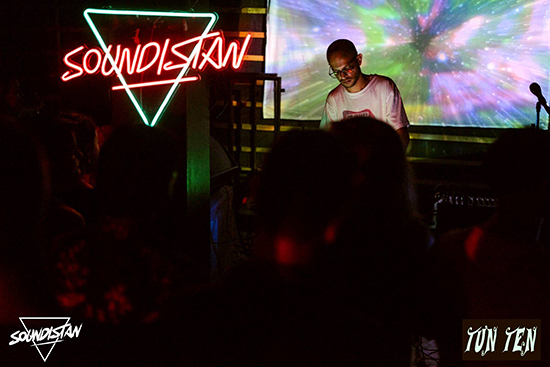
Image courtesy of Soundistan, of their radio pop-up at SAFE ROOM, Bangkok, 2018.
During the first wave of the pandemic, the station had to scale back on costs by migrating all operations entirely to the newly launched app, which remains free for use with no subscription or ads. Releasing producer-rapper duo Moreno and Al4zi’s hip-hop earworm ‘Ginza’ via Boxout.fm Recordings, their in-house label, also played off last year. With a slew of IP offerings lined up for this season and the next, Boxout.fm’s push for original content production and incubation during the pandemic is not only radical but offered an essential support system for creative communities.
The electronic music scene has witnessed exciting growth in Asia, and post-internet radio is gradually coming to terms with its potential in forging collaborations between local artists and labels in the cities. Channeling these idiosyncrasies and commonalities within each community, internet radio has cultivated an environment in which artistic expression can appear, playing an increasingly important role in uncovering transcendental cultures and spaces of expression.
This awareness has also pronounced the palpable absence of a larger regional network of like-minded radio stations. While streaming trends and their reception are, in some ways, still split down the middle by demographic divides determined by access to the internet and western education, internet radio carries regional, western, commercial as well as alternative sounds across South Asian airwaves today.
“We don’t want to be in the shadows,”Abood says, “we want to play a role in supporting and expanding the horizon of radio in India. It should feel normal to want to listen to the radio and perhaps even work at a radio station or have your own radio show.”
“Ultimately, we are a platform for people who need their voices heard and music is somehow within the DNA of all our storytelling.”
.
.
Written by Prarthana Mitra
Image courtesy of Transmitterance Festival by community radio Radio Nazariya, an outworking of local arts organisation Drishti Media.
.
The article was originally published via BorderMovement on January 26, 2022
The views and opinions expressed in this article are those of the authors and do not reflect the official policy or position of Border Movement and its partners.







